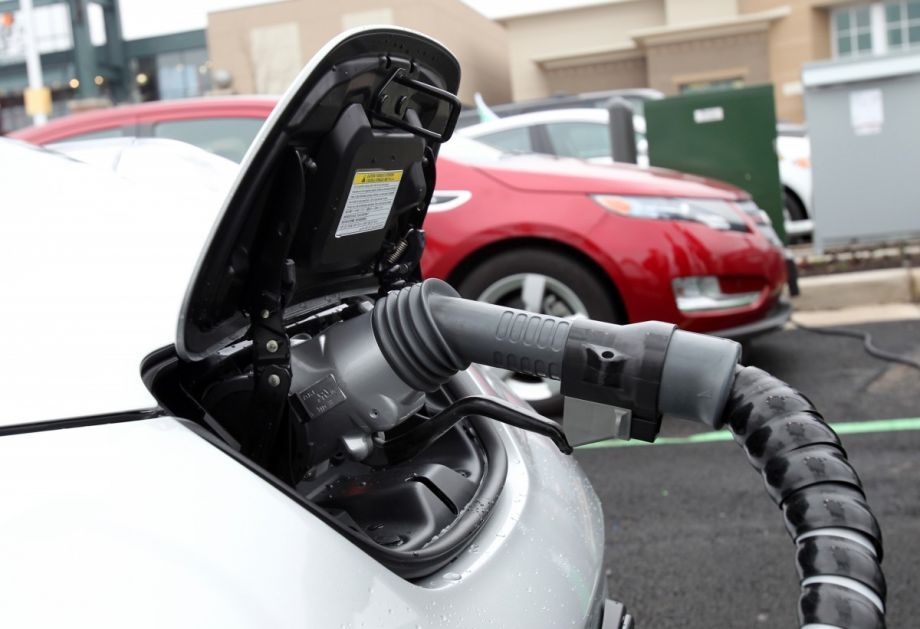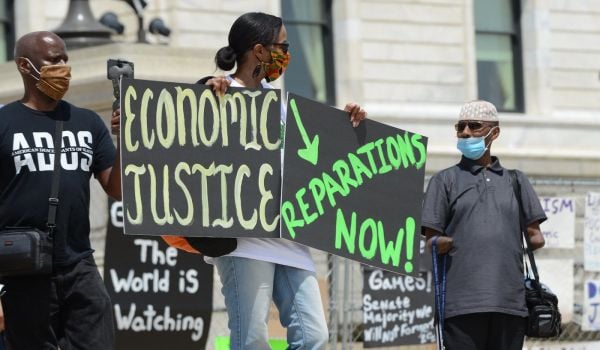Electric vehicles may produce fewer carbon emissions and be cheaper to operate in the long term because they don’t rely on gasoline, but they’re more expensive up front than conventional vehicles. Crucially, this has stalled their expansion into the low-income communities that could benefit from them the most.
California-based nonprofit The Greenlining Institute released a toolkit Monday that aims to make that access easier. The nonprofit was instrumental in pushing the state’s 2014 Charge Ahead California initiative, which sets a goal of 1 million electric vehicles on California’s roads by 2023. The law also requires that the California Air Resources Board use cap-and-trade funds to improve clean transportation options in communities most impacted by pollution and poverty, including through electric car and bicycle sharing programs. The toolkit makes the case for why increasing EV access in underserved communities is crucial to meeting the state’s climate goals, and uses examples from California’s program to inform policy makers across the country.
“Low-income communities and communities of color often breathe the dirtiest air and are most vulnerable to climate change,” said Greenlining Institute Environmental Equity Legal Counsel Joel Espino in a statement. “EVs can help clean the air and even save low-income drivers money on gas and repairs. We know how to design policies that make clean cars a real option for underserved communities, and we hope officials and advocates nationwide will take these ideas and run with them.”
The toolkit tackles the most obvious problem first: Electric vehicles are prohibitively expensive for many. A 2016 all-electric Nissan Leaf costs $29,010, $9,000 more than a comparable non-electric Nissan Juke. EV prices are dropping, but not fast enough to encourage their wider adoption in low-income communities without financial assistance. In California, those cap-and-trade dollars have been used to fund incentives like cash vouchers — up to $9,500 for low-income EV buyers who intend to retire a higher-polluting vehicle — and rebates. The toolkit notes that after-purchase rebates, like those that buyers need to mail in to get money back, are less effective in encouraging low-income EV purchase than instant rebates.
Other states, like Washington, also offer sales tax exemptions for EV purchases up to $35,000. And both the federal government and many states offer a tax credit for buying or leasing an EV. The toolkit cautions that the former strategy can be effective, but must be sustainably funded and targeted to low-income people, to ensure that “lost sales tax dollars are spent on consumers who need the benefit the most.” As for tax credits, they’re less effective for low-income consumers, who are unlikely to have enough tax liability to be impact. In fact, 90 percent of federal EV tax credits go to individuals with yearly incomes of $75,000 or more.
Financial barriers aren’t the only barriers, though. Even if a cash voucher makes an EV purchase feasible, a low-income driver may lack access to charging infrastructure, or may actually be better served by electric car-sharing, not private ownership. The toolkit recommends that any project looking to improve EV access first conduct a “community mobility needs assessment.” In many dense, urban, low-income neighborhoods, car-sharing may be a better deal. But traditional car-sharing companies like Zipcar or car2go often do not locate in poor neighborhoods without a nudge, and cities may need to take the lead in expanding these services. Los Angeles is in the process, planning to launch 100 electric vehicles and 110 charging stations in disadvantaged communities this fall.
Then there’s the nitty-gritty: How are people supposed to navigate the maze of vouchers, rebates and tax incentives? The Greenlining Institute recommends a universal application that consumers can fill out to determine their eligibility for various programs. One southern California initiative to encourage people to scrap their vehicles and replace them with cleaner ones utilizes a case management model, assigning staff to help applicants fill out paperwork, an approach particularly effective in involving immigrant communities.
Underlying all of these programs is the need to educate the public about electric vehicles, and increase incentives for car dealers to sell them over traditional gas-powered cars. Connecticut has the nation’s first program to provide a financial incentive to dealerships: $300 per eligible EV purchase or lease. Similar programs could be structured to provide higher incentives for selling to low-income consumers. The Greenlining Institute also recommends educating the public through existing community-based organizations, educating public officials and diversifying the EV workforce. As the sector grows, there must be initiatives that ensure those jobs are accessible to underserved community members — especially if public funding is involved — through targeted and local hire programs.
Jen Kinney is a freelance writer and documentary photographer. Her work has also appeared in Philadelphia Magazine, High Country News online, and the Anchorage Press. She is currently a student of radio production at the Salt Institute of Documentary Studies. See her work at jakinney.com.
Follow Jen .(JavaScript must be enabled to view this email address)






_600_350_80_s_c1.jpg)









